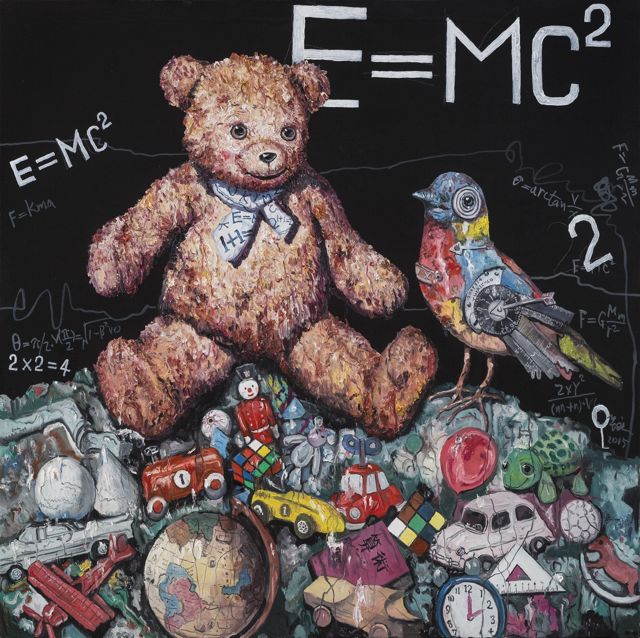In the past, the main characteristics usually used to define art markets can be summarised in the following way: high-risk investment, illiquid, opaque, unregulated, high transactions costs, at the mercy of erratic public taste and short-lived trends. Artworks do not generate any cash flows that can be discounted, except to the extent that income can be obtained through lending and incurring expenses in the form of storage, insurance and associated costs. The art markets are also currently virtually ‘unhedgeable’.
This short description of the art markets might be enough to discourage many to look at it.

However, if we take a closer look at the latest trends in today’s internet era which are directly or indirectly affecting the art markets’ environment, they suggest the emergence of a financial fine art market where fine art is considered as a new asset class. The simultaneity of those trends creates an environment that in the past has never been very favourable to supporting the materialisation of such a transformation.
These days, Art can represent sizable assets for many investors. Art proves to have longevity and substance as an alternative asset class. There has been a growing interest in art related services among the financial community and an increasing focus on portfolio diversification from clients.
These developments show that there is a significant opportunity to integrate the concept of collectible assets in wealth management. Services such as asset allocation strategy, liquidity optimisation, manage over-exposure to risk, develop appropriate reporting, optimise taxation or organise appropriate transmission to heirs / effective tax and inheritance planning for collections or gifting or donation to charity are examples of services that can be integrated in an extended wealth management service offering.
Globalisation and research
With the long-termed, worldwide trend of increasing wealth, alongside the growth in knowledge about collectible markets, a much larger community has started to be interested in collecting and/or investing in rare collectible assets.
Art in the overall asset allocation strategy
Art is attractive from a financial investment point of view over the long run as it is a store of value that generated moderate positive real return. Art has also a low correlation with stocks and bonds which offer diversification possibilities.
New types of collective investment vehicles dedicated to art
Several new different initiatives around the world search to securitise several billion of US$ of artwork, such as art investment funds, tradable art structures products or dedicated art trading exchanges.
Increasing interest from the financial industry
We can see the development of art services among the financial institutions. The offering mainly consist of three categories of art services: art advisory services, art lending and art investment services.
Increasing transparency
The art market is becoming more and more transparent due to research in finance and economics as well as date dissemination.
Whenever physical assets such as commodities, real estate and art meet the world of finance, it becomes complex. Investors know how to turn a commodity into a financial asset: the key is standardization of the asset class. For instance, there are grades for commodities like oil and wheat. Investors have learned how to deal with real estate assets. One of the keys is securitization which is the process of turning private buildings into public securities. When it comes to art, investors do not have the answer, at least not yet.
So, how can we deal with art as an alternative investment? Art as an asset class is essentially heterogeneous, i.e. its value derives from unique characteristics which are specific to each artwork. There might be a temptation to assimilate artworks and luxury goods. But contrary to luxury goods, art is not mass-produced nor mass-consumed. Art carries strong emotional and cultural values. Its uniqueness dominates all other investment characteristics.

When art becomes an asset, it enters into a totally new realm dominated by concepts such as market efficiency and risk/return optimization. Good investment decisions are not only based on sound understanding of what art as an alternative asset can bring to a portfolio of financial assets, but also on connoisseurship and in-depth knowledge of the art market’s workings and trends.
China has been at the center of the global art market in recent years. According to the latest Art Economics report released earlier this year, China accounted for 19% of the global art market in 2015. Likewise, auction prices of Chinese classical artworks as well as contemporary Chinese art have made headlines the world over, while Chinese auction houses have moved to top spots globally.
In this context, good investments are about timing and asset selection. It is easy to make good decisions in a constantly increasing market. Likewise, it is comparatively easy to make good decisions in a highly standardized asset class. This means that more than for any other asset classes, art requires specific expertise in order to make the right investment decisions, both in terms of market timing and choice of artworks. Illiquidity, lack of transparency and the extreme heterogeneity of artworks are sources of inefficiency, but also potential sources of profit for those in the know.
Investors are well aware that markets cannot grow indefinitely. The reassuring point here is that money can also be made, may be even more so, in volatile markets provided the investment savviness that comes with expertise. As you can see, in the world we live in today, investing in art comes with great rewards.
